
Every year, about 1 in 7 strokes happens because of atrial fibrillation - a chaotic heartbeat that lets blood pool and clot in the heart. These clots can travel to the brain, causing a stroke. For people with this condition, taking the right blood thinner isn’t just a recommendation - it’s life-saving. Among the options available today, apixaban stands out as one of the most effective and safest choices.
What Is Apixaban and How Does It Work?
Apixaban is an oral anticoagulant, also known as a direct oral anticoagulant (DOAC). It works by blocking Factor Xa, a key protein in the blood clotting process. Unlike older blood thinners like warfarin, apixaban doesn’t require regular blood tests to check your levels. It also doesn’t interact heavily with most foods or other medications, making it easier to manage day to day.
When your heart beats irregularly in atrial fibrillation, the upper chambers don’t contract properly. Blood doesn’t flow smoothly - it swirls and pools, especially in a small pouch called the left atrial appendage. That’s where clots form. Apixaban stops those clots from forming in the first place, reducing the chance they’ll break loose and cause a stroke.
Why Apixaban Over Other Blood Thinners?
For decades, warfarin was the only option. But it came with a lot of baggage: frequent blood tests, dietary restrictions (especially vitamin K-rich foods like spinach and kale), and dozens of drug interactions. Many patients found it hard to keep their levels stable, leading to either too much bleeding or not enough protection.
Apixaban changed that. In the ARISTOTLE trial - a major study involving over 18,000 patients with atrial fibrillation - apixaban reduced stroke and systemic embolism by 21% compared to warfarin. It also cut major bleeding by 31%. That’s not just a small improvement. It’s a game-changer.
Compared to other DOACs like rivaroxaban or dabigatran, apixaban has shown consistently lower rates of brain bleeds and gastrointestinal bleeding. This matters because bleeding in the brain or gut can be deadly. For older adults - who make up the majority of atrial fibrillation patients - safety is just as important as effectiveness.
Who Benefits Most From Apixaban?
Apixaban is approved for adults with non-valvular atrial fibrillation - meaning the irregular heartbeat isn’t caused by a damaged heart valve. It’s especially helpful for:
- People over 65
- Those with high stroke risk scores (CHA₂DS₂-VASc score of 2 or higher)
- Patients with kidney problems (it’s partly cleared by the kidneys, but still safer than warfarin in mild to moderate kidney disease)
- People who’ve had a previous stroke or TIA
- Those who struggle with warfarin’s restrictions or monitoring
It’s also a top choice for people with a history of falls or those living alone. Why? Because even if they miss a dose or have a minor injury, the risk of serious bleeding is lower than with warfarin. Studies show apixaban users have fewer hospital visits due to bleeding complications.
Dosing and How to Take It Correctly
Most adults take apixaban twice a day - 5 mg each time. But if you’re over 80, weigh less than 60 kg (132 lbs), or have reduced kidney function, your doctor might lower the dose to 2.5 mg twice daily. That’s based on real-world data showing these groups benefit from the lower dose without losing protection.
Take it with or without food. It doesn’t matter. The key is consistency. Skip a dose? Take it as soon as you remember - unless it’s almost time for the next one. Never double up. Missing doses increases stroke risk, but taking too much raises bleeding risk. That balance is why sticking to your schedule matters more than you think.

What Are the Side Effects?
Most people tolerate apixaban well. The biggest risk is bleeding - but it’s less common than with warfarin. Signs to watch for:
- Unusual bruising or bleeding that won’t stop
- Bloody or tarry stools
- Red or pink urine
- Severe headaches, dizziness, or weakness
- Unexplained swelling or pain
Don’t ignore these. Call your doctor right away. Also, tell any healthcare provider - even dentists - that you’re on apixaban before any procedure. You might need to pause it temporarily, but never stop it on your own.
Some people report mild stomach upset or nausea. These usually go away after a few weeks. If they don’t, talk to your doctor. There’s no need to suffer through it - there are other options.
What About Cost and Access?
Apixaban is more expensive than warfarin - but not as much as you might think. In Australia, it’s listed on the Pharmaceutical Benefits Scheme (PBS), so patients pay a capped co-payment (around $30 for general patients, less for concession holders). In the U.S., generic versions became available in 2023, bringing the monthly cost down from over $500 to under $50 in many cases.
Insurance coverage is generally good because apixaban’s proven benefits reduce long-term healthcare costs. Fewer strokes mean fewer hospitalizations, rehab stays, and long-term care needs. That’s why insurers often prefer it over warfarin.
What Happens If You Stop Taking It?
Stopping apixaban suddenly is dangerous. Your stroke risk jumps back up within days. Some patients stop because they’re scared of bleeding, or because they feel fine. But atrial fibrillation doesn’t always cause symptoms. Just because you don’t feel it doesn’t mean the clot risk is gone.
If you need surgery, your doctor will plan a safe pause - usually 24 to 48 hours before, depending on your kidney function and procedure risk. Never stop it without medical guidance. Even a few days off can be risky.
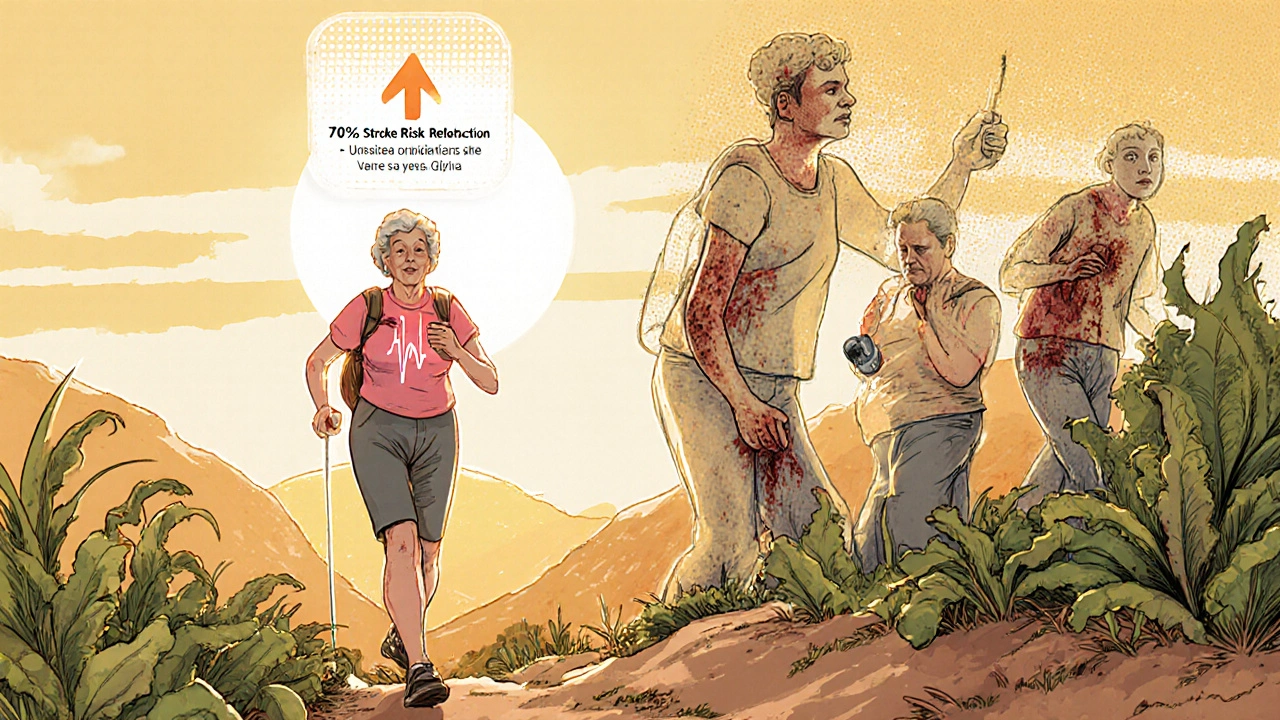
Real-Life Impact: A Patient Story
At 72, Margaret had atrial fibrillation for five years. She was on warfarin but kept having INR levels that were too high. She bruised easily, had nosebleeds weekly, and had to avoid salads, broccoli, and green tea. After switching to apixaban, her bleeding stopped. Her INR tests vanished. She started hiking again. Her doctor told her she’d reduced her stroke risk by 70% compared to not taking anything.
She didn’t need to change her diet. She didn’t need to schedule monthly blood draws. She just took two pills a day - and got her life back.
When Is Apixaban Not the Right Choice?
Apixaban isn’t for everyone. Avoid it if you:
- Have a mechanical heart valve (it’s not approved for this use)
- Have severe kidney failure (creatinine clearance under 15 mL/min)
- Are actively bleeding or have a history of brain hemorrhage
- Have an allergy to apixaban or similar drugs
Also, if you’re on strong dual antiplatelet therapy (like aspirin plus clopidogrel after a stent), your doctor may choose a different approach. Combining multiple blood thinners increases bleeding risk without always improving protection.
What’s Next for Apixaban?
Research is ongoing. New studies are looking at apixaban for stroke prevention in patients with atrial fibrillation and advanced kidney disease. Early results suggest it may still be safer than warfarin even in these high-risk groups.
Doctors are also exploring whether lower doses can work for younger, healthier patients with lower stroke risk. The goal isn’t just to prevent strokes - it’s to prevent over-treatment too.
For now, apixaban remains one of the most trusted tools we have. It’s not perfect. But for most people with atrial fibrillation, it’s the best balance of safety, effectiveness, and simplicity.
Can apixaban be taken with other medications?
Apixaban has fewer drug interactions than warfarin, but some medications can still affect it. Strong P-gp inhibitors like ketoconazole or cyclosporine can raise apixaban levels and increase bleeding risk. Some seizure meds, St. John’s wort, and rifampin can lower its effectiveness. Always tell your doctor or pharmacist about every pill, supplement, or herb you take.
Is apixaban safe for elderly patients?
Yes - and it’s often preferred for older adults. Studies show apixaban reduces stroke risk without increasing major bleeding in patients over 75. Its lower bleeding risk compared to warfarin makes it ideal for frail or fall-prone seniors. Dose adjustments are common and based on age, weight, and kidney function.
Do I need to get blood tests while on apixaban?
No routine blood tests are needed for apixaban, unlike warfarin. However, your doctor may check your kidney function once or twice a year, since apixaban is partly cleared by the kidneys. If your kidney function changes significantly, your dose might need adjusting.
Can I drink alcohol while taking apixaban?
Moderate alcohol is generally okay - one drink a day for women, two for men. But heavy drinking increases bleeding risk and can worsen atrial fibrillation. If you drink regularly, talk to your doctor. Binge drinking while on apixaban can be dangerous.
What happens if I miss a dose of apixaban?
If you miss a dose, take it as soon as you remember - but only if it’s within a few hours of your usual time. If it’s close to your next dose, skip the missed one and go back to your regular schedule. Never take two doses at once to make up for a missed one. Missing doses raises your stroke risk, so try to set phone reminders.
If you have atrial fibrillation, apixaban offers a clear path to reducing stroke risk without the daily hassle of warfarin. It’s not magic - but it’s science that works. And for millions of people, it’s the reason they’re still here, living full lives.
15 Comments
Lorne Wellington
November 1, 2025 at 10:20 AM
Honestly? This is one of those rare cases where science actually made life easier. I’ve had AFib for 8 years, switched from warfarin after my third nosebleed during a hiking trip. Apixaban? No more spinach guilt. No more monthly blood draws. Just two pills, two times a day. I’m back to kayaking. 🙌
Shanna Talley
November 1, 2025 at 18:53 PM
If you're on apixaban and feeling fine, don't stop. Just keep going. Your future self will thank you. You don't need to feel sick to be at risk. This isn't magic, it's medicine that works. Stay consistent. You got this 💪
Samuel Wood
November 1, 2025 at 21:48 PM
I mean, sure, apixaban is great... but have you considered the *pharmaco-economic implications* of DOACs on Medicare? The real issue isn't efficacy-it's the systemic exploitation of patient vulnerability by Big Pharma. *sips organic matcha*
Jacqueline Anwar
November 2, 2025 at 04:21 AM
Let me be perfectly clear: anyone who takes apixaban without consulting a hematologist first is playing Russian roulette with their cerebral vasculature. This isn't a wellness trend. It's a medical intervention. Please stop treating your anticoagulation like a grocery list.
Megan Raines
November 2, 2025 at 16:02 PM
So... if I skip a dose and then drink a margarita, is that a stroke or just a bad Tuesday?
California Daughter
November 4, 2025 at 08:43 AM
I’ve been on apixaban for 3 years... and honestly? I think it’s overrated. My uncle in Ohio was on warfarin for 15 years and never had a stroke. And he ate cheeseburgers every day. Maybe we’re just overmedicalizing normal aging? 🤷♀️
Jenni Waugh
November 4, 2025 at 14:59 PM
Let’s be real-apixaban is the Apple Watch of blood thinners. Sleek. Convenient. Expensive. And somehow, people think it’s revolutionary. Meanwhile, in India, they’re still using warfarin and saving billions. Maybe the real innovation is not needing a PhD to take your meds?
chantall meyer
November 5, 2025 at 05:04 AM
I’ve read this entire post. And I’m still not convinced. You mention ARISTOTLE trial like it’s scripture. But have you considered the publication bias? Who funded it? Who owns the patent? The data is clean. The motives? Not so much.
Ganesh Kamble
November 5, 2025 at 20:32 PM
bro why are we even talking about this? warfarin is fine. just take it. stop overthinking. also apixaban is just a fancy name for 'expensive aspirin'
Will RD
November 5, 2025 at 21:03 PM
if you miss a dose u r a dumbass. just take it. its not rocket science. stop making it a drama.
Theresa Ordonda
November 6, 2025 at 09:57 AM
I started apixaban after my dad had a stroke. He was on warfarin, missed his INR, and ended up in the ICU. Now I take mine like clockwork. Two pills. Morning. Night. No drama. No salads. Just peace. ❤️
Judy Schumacher
November 7, 2025 at 03:35 AM
I find it fascinating how the medical establishment has collectively decided that convenience trumps cost-effectiveness. Apixaban is a triumph of pharmaceutical marketing over clinical necessity. The fact that we’ve normalized daily dosing as a metric of success reveals a deeper cultural malaise. We don’t want to be responsible for our health-we want a pill that makes it invisible. And yet, we still blame patients for non-adherence. The irony is exquisite.
Casey Crowell
November 8, 2025 at 18:44 PM
I used to hate taking pills. But apixaban? It’s the only one I don’t feel like a zombie for taking. I’m 68. I hike. I dance with my grandkids. I don’t need a blood test to prove I’m alive. Just two pills. That’s it. 🙏❤️
ridar aeen
November 10, 2025 at 11:23 AM
I get why people like apixaban. But what about the ones who can’t afford it even with insurance? The ones who live paycheck to paycheck? We talk about efficacy like it’s a universal truth. But for many, it’s just another barrier. Let’s fix access before we canonize the drug.


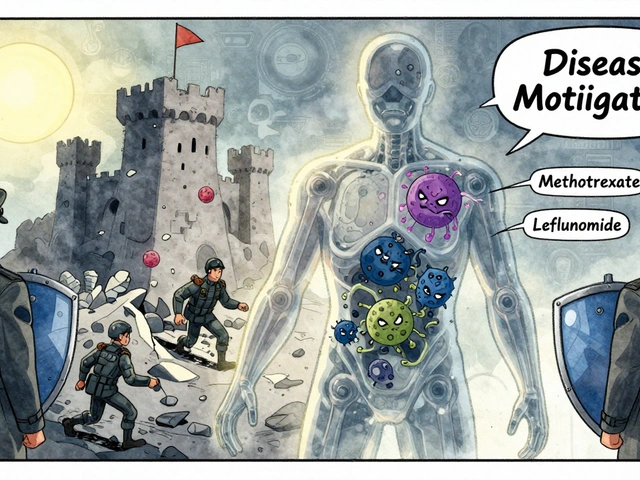
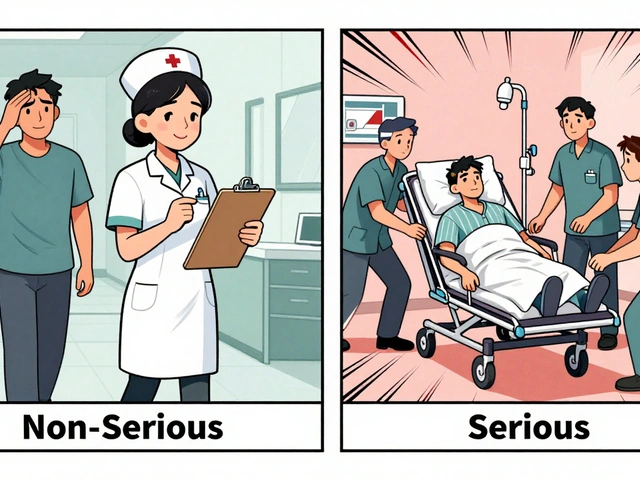
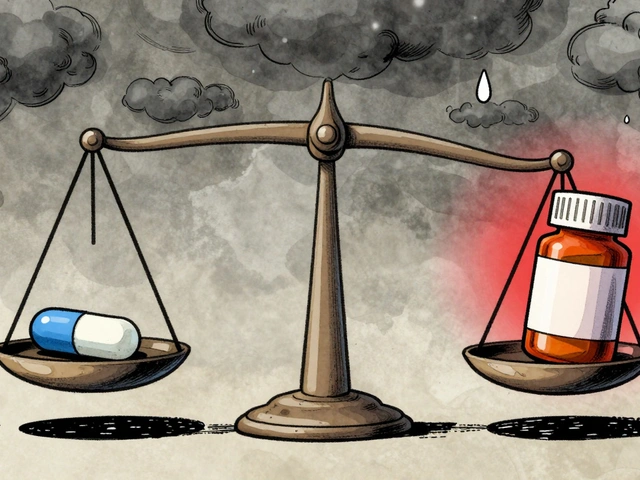
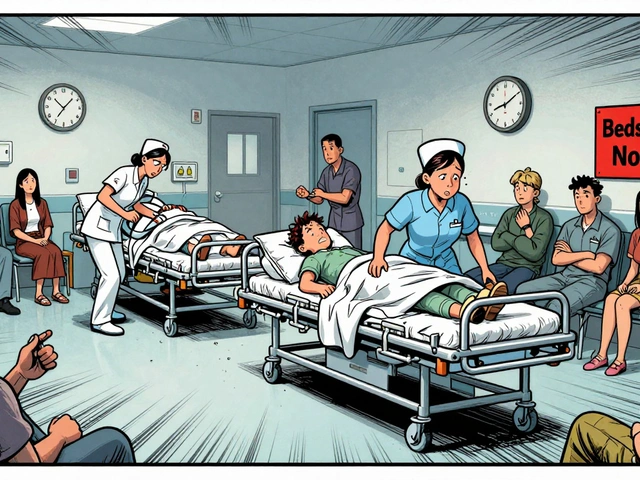
Vishwajeet Gade
October 31, 2025 at 02:28 AM
apixaban? more like apixa-bullshit. warfarin is cheaper and works fine if you actually care to monitor your INR. why are we paying 500 bucks for a pill that does the same thing? #indianhealthcareknowsbetter